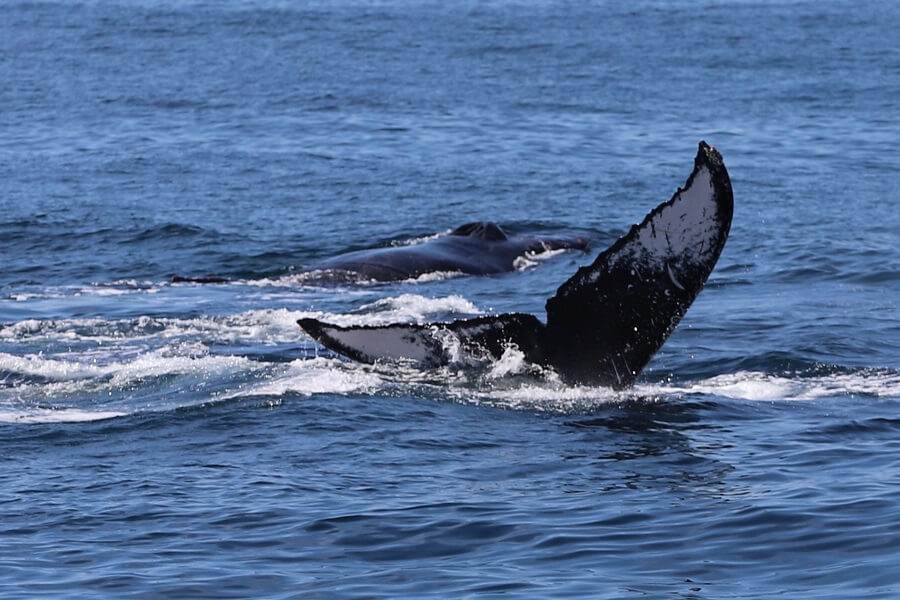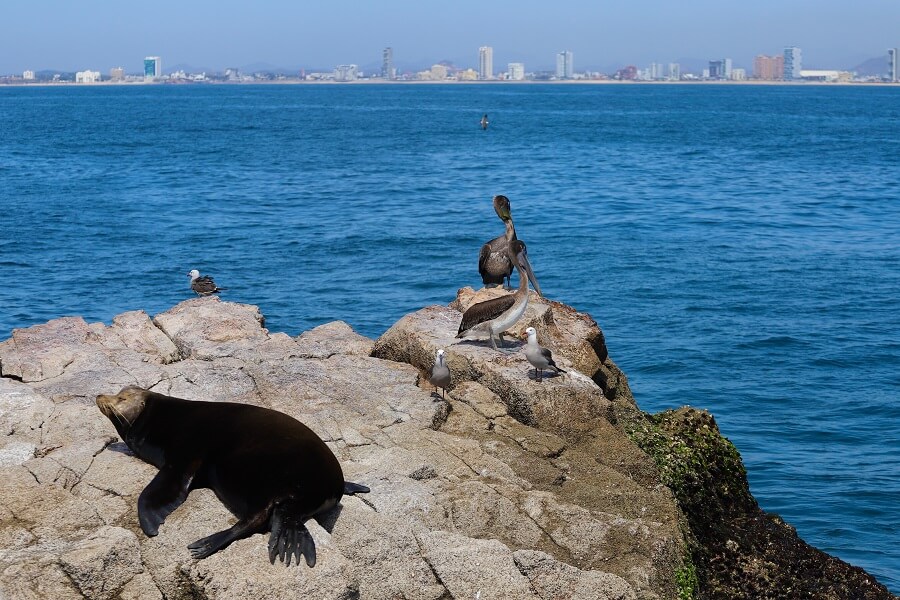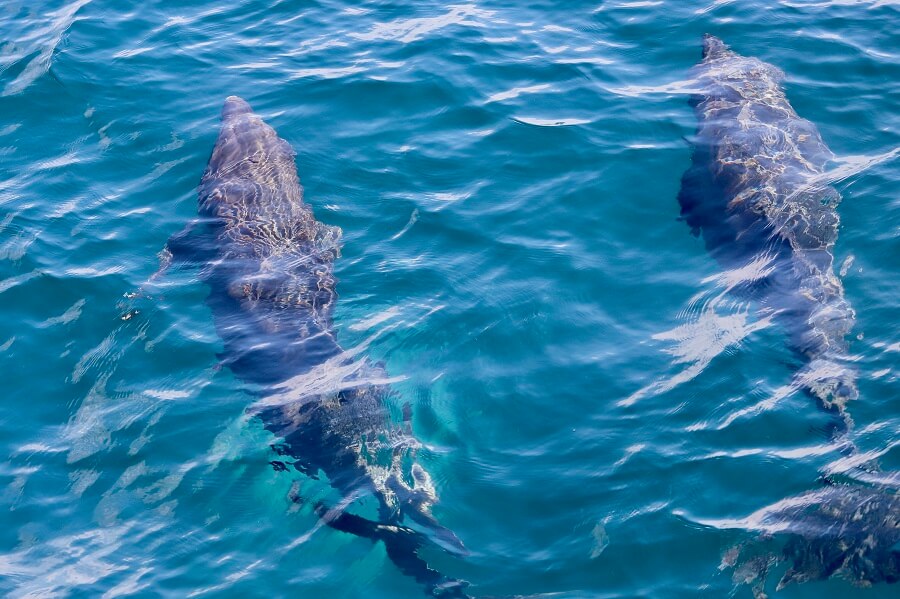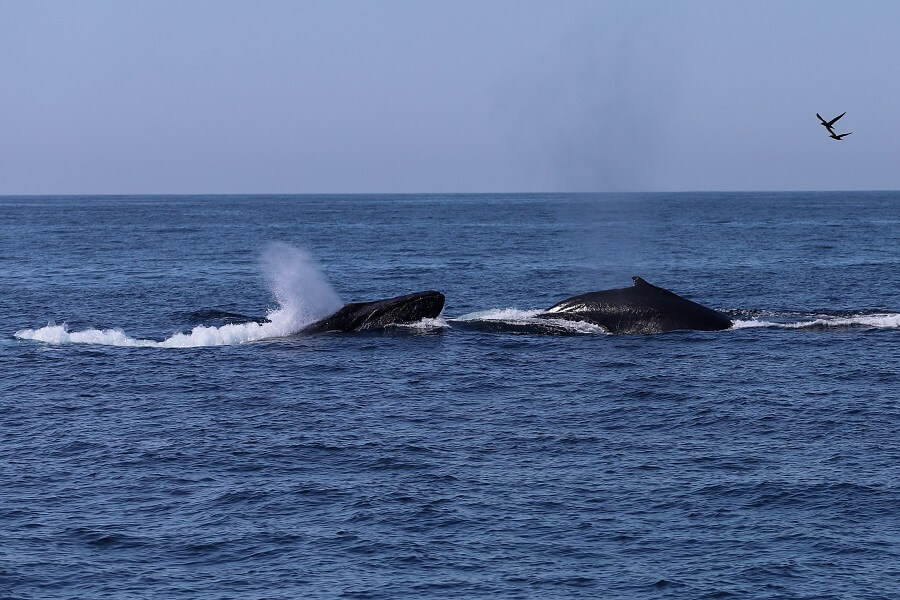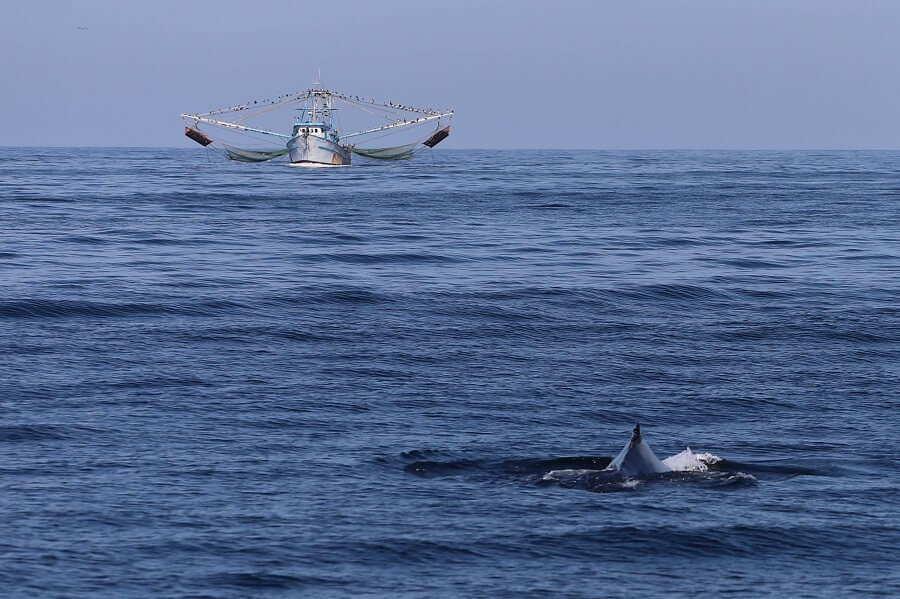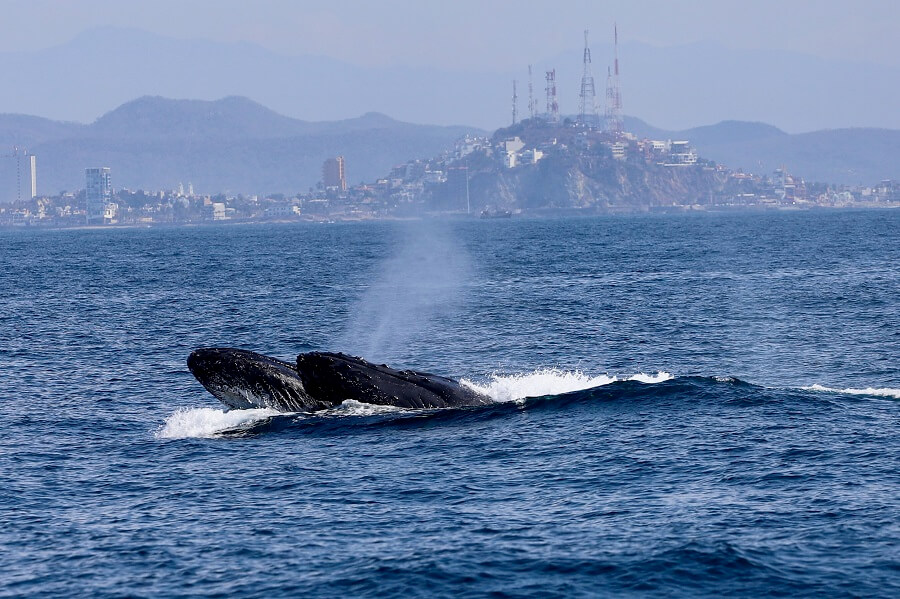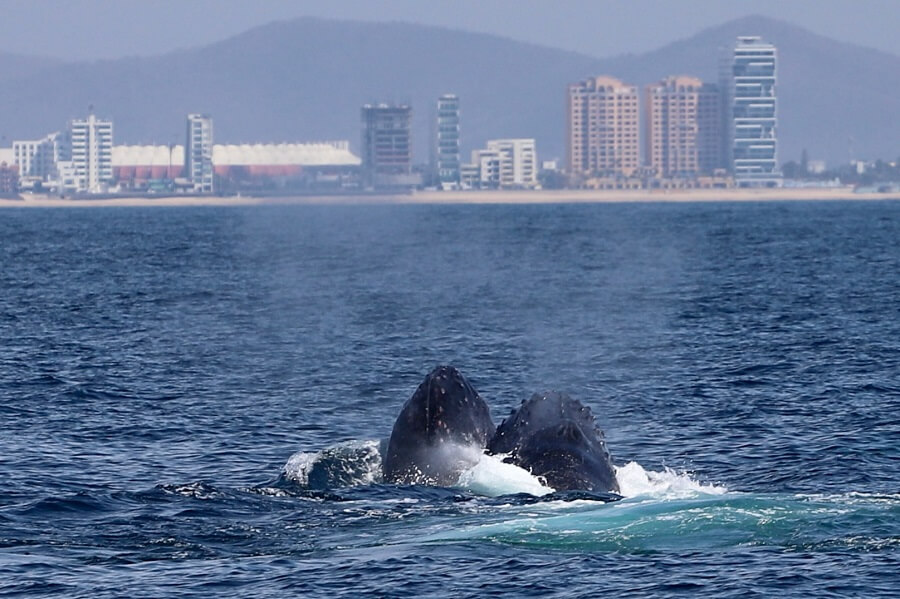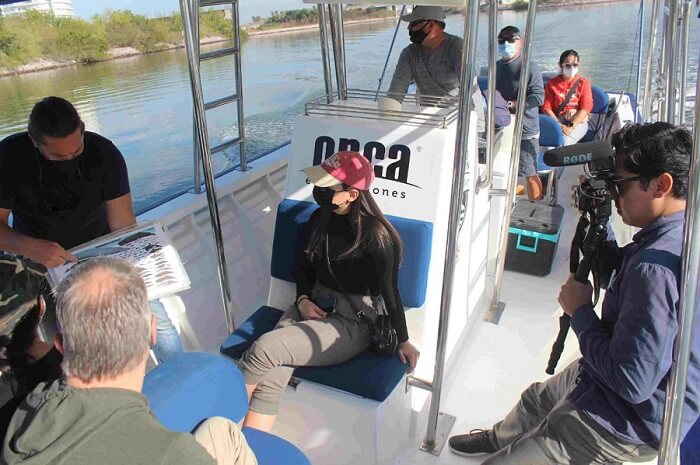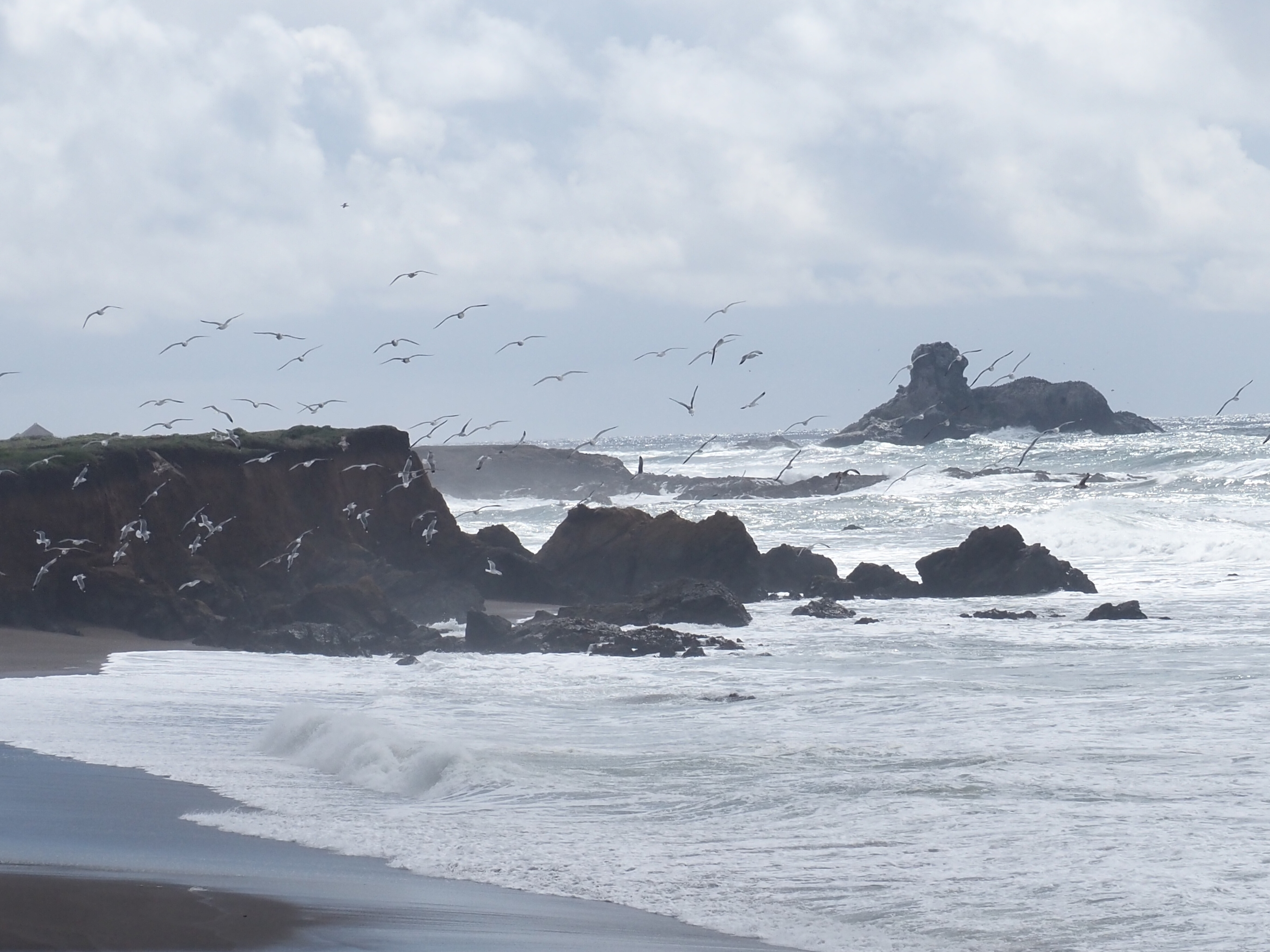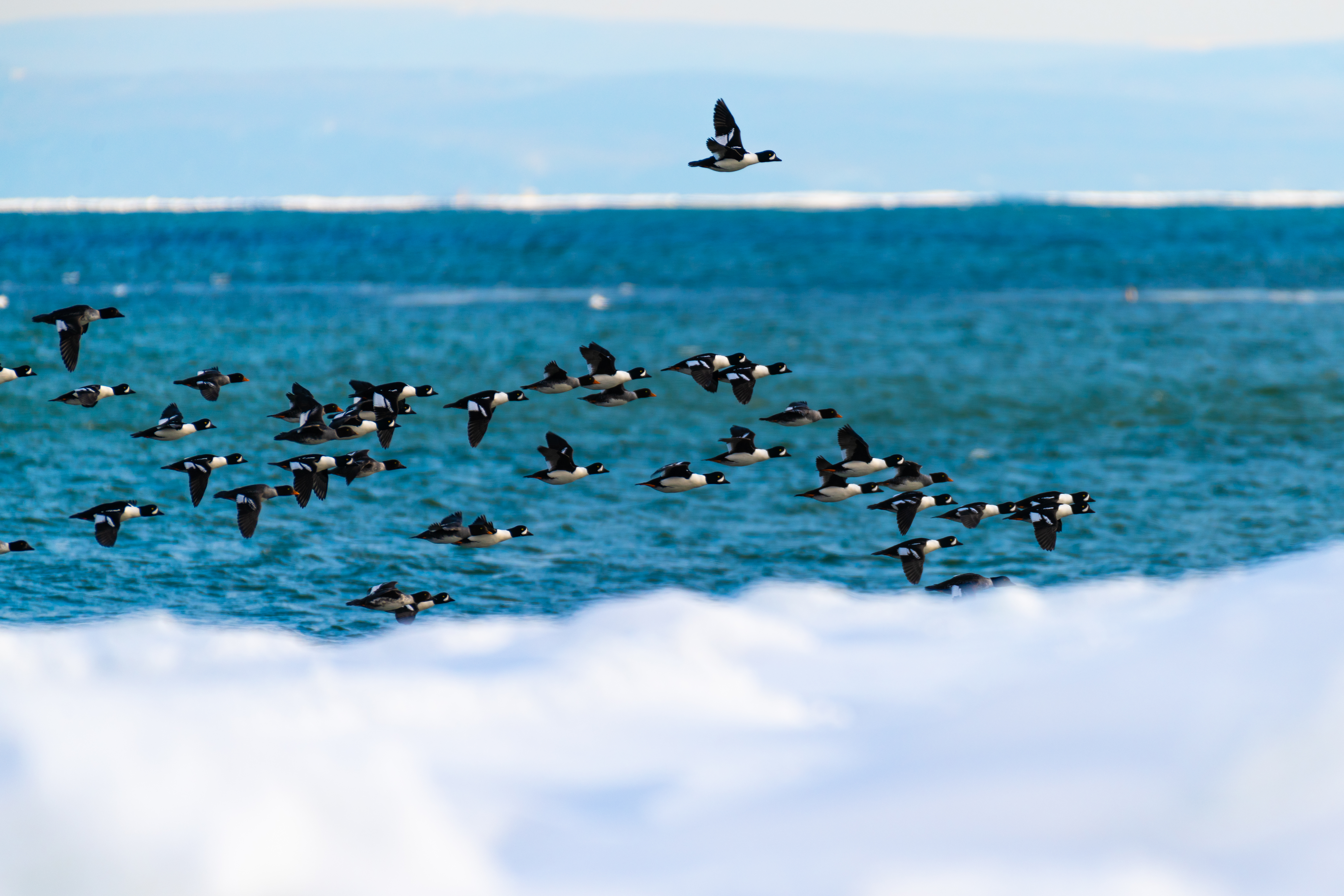For the past few years, I’ve been making the occasional winter trip to Mexico, just for the sake of warming up my old bones. I always take the opportunity to watch whales in their southern breeding grounds, so as not to be away from marine mammals for too long. I therefore have the opportunity to witness behaviours that are unlike those we observe in the animals’ summer feeding grounds.
This time, I cannot resist the urge to share with you the extraordinary experience I had in mid-February during an offshore outing: a scene of intense competition between male humpback whales for the favours of a female. And at the same time tell you about the scientific research carried out on cetaceans on the Pacific coast of Mexico.
Half dancing, half fighting
This year I returned to Mazatlán, which is on Mexico’s west coast, just south of the Sea of Cortez and Baja California. Here, in the warm waters of the Pacific in January and February, we can observe good numbers of humpbacks, since they come here to reproduce and give birth before returning to their feeding grounds off the U.S. and Canada. Other rorquals species are rarer near the coast, but dolphins are also plentiful.
On February 14, I was lucky enough to be invited by my friend Oscar Guzón of ONCA Explorations to an extraordinary whale-watching trip. We patrolled this humpback whale breeding area for 4 hours. We encountered a few olive ridley sea turtles, large schools of bottlenose dolphins that came to play in the waves of the boat, sea lions, and, of course, about a dozen humpbacks.
Above all, for over an hour, we witnessed a fight between male humpbacks for the favours of a female. This is an unusual behaviour for me, as I usually observe this species in its feeding grounds. But here, off Mazatlán, we’re in the species’ breeding range! The highlight of the show was obviously this ‘rumba’ – moreover this term probably comes from the word ‘rumble’ in the sense of ‘to fight’ rather than from the Afro-Cuban dance of the same name.
It is hard for me to describe in just a few lines this fight and the strategies used by the males to win over the female. All I can do is submit a couple of photos and the short video I put together to help you imagine what we had the chance to observe for hours on end: robust exchanges between bulls on the surface, which leads us to believe that the blows below were equally as powerful! No wonder some young males prefer to stay in their feeding grounds in the St. Lawrence rather than rub fins with older, more experienced males down South!
Research and education in the Sea of Cortez
I’d like to take advantage of this incredible anecdote to tell you about a field scientist who is carrying out ground-breaking work here on Mexico’s Pacific coast: my friend Oscar Guzón. For over fifteen years, Oscar has been carrying out fieldwork in an area southeast of Baja California, near the Sea of Cortez. After several internships in Quebec, notably at MICS in the late 1990s and early 2000s, he founded here in 2006 his own research station and the company ONCA Explorations. This company offers ecotourism activities to finance its research: whale watching, birding in a reserve near Mazatlán and even diving excursions in prime cetacean habitat. Oscar is an excellent communicator and teacher who strongly believes in educating and raising awareness about the richness of the local ecosystem.
Together with the other members of his team, Oscar monitors humpbacks in the area by tracking and photo-identifying observed individuals in order to maintain a catalogue. While tracking these animals, he interprets their behaviours and records their vocalizations.
In the course of his research, he analyzes spatial-temporal patterns in humpback whale distribution and abundance in this sector, as well as the variations of these patterns in relation to climatic variations. In short: where are the whales? Why are they here, and how do they use this habitat? The answers to these questions contribute to a better understanding of the threats faced by cetaceans in this specific area, which helps better protect them.
Muchas gracias Oscar Guzón y Saúl Herrera!


